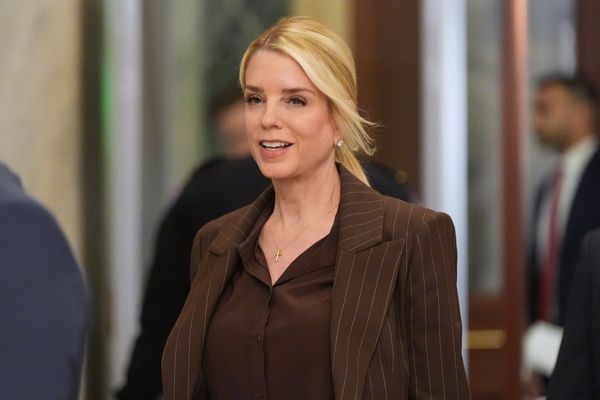In the 1960s and ‘70s, global population growth was a huge concern. Scientists and the popular press spoke of a population explosion that threatened to cause famine, poverty and depletion of the Earth’s natural resources. The world’s population had grown at an accelerating rate from just under 1 billion in 1800 to 2 billion in 1928 and 3 billion in 1960, with growth peaking at 2.1% per year in 1968.
It seemed then that slowing the population growth rate would be an insurmountable challenge. And yet in the past six decades, we have been able to flatten the curve — growth has slowed to 0.8%. Even with decelerated growth we just hit 8 billion people on Nov. 15, according to the U.N. But a peak population is in sight — predicted to be 10.4 billion during the 2080s.
Today’s climate emergency is reminiscent of the past population growth crisis: Both represent existential challenges requiring sustained global efforts. Our success on the population issue holds key lessons for addressing the climate crisis as well.
In the face of accelerating population growth, the global development community learned that it would take urgent societal interventions to slow the trend. While researchers couldn’t pinpoint exactly what level of world population would be sustainable, they determined that slower growth would allow public and private sector institutions to keep pace with people’s needs.
To slow growth, some governments undertook coercive and unethical interventions, like forced sterilizations in India, Peru, China and other countries. These programs pitted people against their governments, violated human rights and exacted enormous damage on the social fabric.
In reaction to those draconian efforts, national and international women’s rights organizations demanded a new approach based on providing information and personal choice. Programs and policies that empowered women and men to pursue life goals in addition to marriage and childbearing incentivized them to adopt family planning methods voluntarily and have fewer children. Together with effective and accessible family planning, these actions slowed population growth to its current level.
The United Nations initiated a series of conferences focused on population in 1954 that culminated in the 1994 International Conference on Population and Development in Cairo. Country participants at the ICPD developed the Program of Action that became the road map for pursuing reproductive health and rights globally.
All 179 participating countries endorsed the action plan, which shifted global focus away from hitting demographic targets and instead toward promoting individual dignity and human rights, including the right to family planning, via development — investments in people and their ability to plan their lives. This approach encouraged access to education, employment and healthcare on their own merits. At the same time, those goals aligned well with lowering fertility.
In 2003, for example, Kenya established free primary education, expanding girls’ opportunities beyond marriage. A number of countries around the world adopted new laws against sexual harassment in employment between 2013 and 2017, helping to combat stigma and discrimination faced by women pursuing life options outside the home. Countries, including Thailand, have expanded health services, which lower infant and child mortality and assure parents that they do not need “extra” children as old-age insurance. These and other broad social changes have changed people’s reproductive practices and reduced national population growth, helping to slow global population growth.
Much as the United Nations galvanized the world on population, it has convened countries regularly since 1994 to tackle climate change and set international and national goals. The 27th climate conference just concluded in Sharm-el-Sheikh, Egypt. Each nation has an action plan to reduce greenhouse gases, which cause global warming. But the current plans will be insufficient to achieve the goal of limiting temperature rise to 1.5 degrees Celsius by the end of this century. Just as we slowed population growth by expanding investments in people’s education and health, we need to do more to align nations and their citizens to the demands of cutting greenhouse gas emissions.
In the U.S., the Inflation Reduction Act is a good start on accelerating the transition to clean energy. The IRA provides incentives for states and localities, small businesses and consumers to adopt clean energy sources, largely by reducing the cost and increasing demand for green technology. For example, 27% of U.S. greenhouse gas emissions come from transportation. To encourage more car owners to purchase electric vehicles, the IRA provides tax credits for the purchase of EVs by buyers with incomes below a cap. It also includes tax credits to encourage domestic electric car production, and grants and rebates to localities to replace heavy-duty vehicles, such as buses and garbage trucks, with zero-emission vehicles. The IRA’s strategy of aligning consumer interests with the clean energy transition in high emission sectors should be emulated elsewhere.
And just as population solutions were tailored to individual countries, climate solutions should vary — not only by countries’ needs, but also by their overall responsibility for the crisis. As the world’s biggest historical emitter of greenhouse gases, the U.S. has a responsibility to assist other nations to transition to clean energy sources — while simultaneously addressing the climate-related damage and losses many countries have already experienced.
At the latest climate conference, U.N. leaders pledged to place human needs at the forefront of climate action. In other words, we must develop policies that reduce climate change while improving access to clean water, plentiful and nutritious food, adequate energy from clean sources and protection from the health threats associated with global warming.
Time is of the essence for world leaders to honor that pledge. As we learned before, people are better equipped to respond to a global crisis when doing so also satisfies pressing needs, improves standards of living and maintains human dignity.







